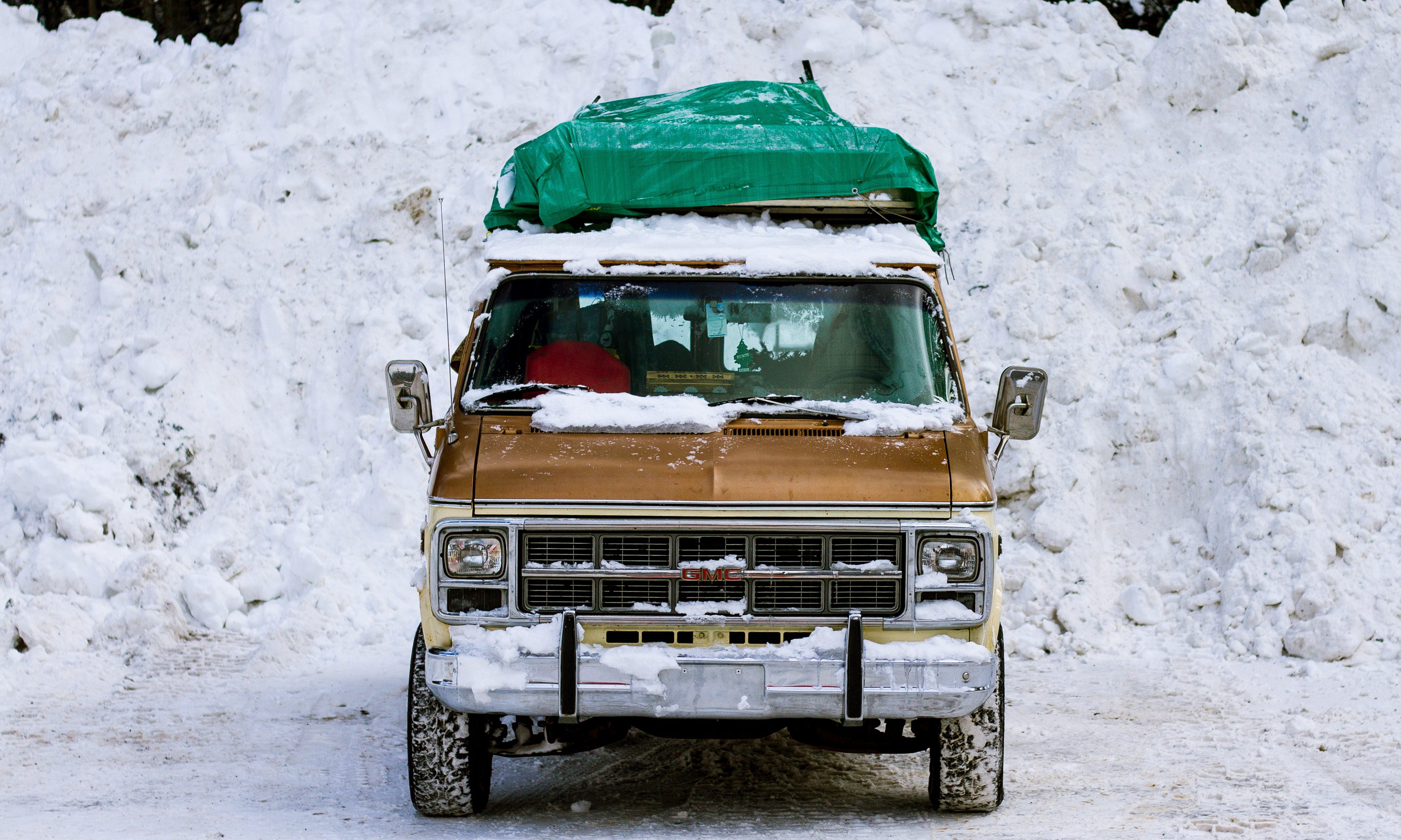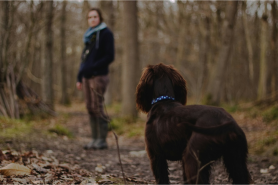

Don’t stop camping when temperatures drop! Winter car camping is an amazing way to access untouched terrain as a backcountry skier or snowshoer, jump on the first ski chair (many ski resorts allow you to overnight camp in the parking lot!) or visit a favorite National Park without the crowds — a perspective few people ever experience.
Videos by Outdoors
Car camping in cold weather does require a bit more preparation and knowledge to stay safe, however. Here, 13 tips to stay safe and enjoy winter car camping.
Know how cold is too cold
Most experts agree, an outside temperature below -30°F is too cold to sleep in your car, period. But in reality, any temps lower than 32°F involve some level of danger. In fact, hypothermia can occur anywhere between 30 and 50°F with prolonged exposure, especially if you get wet.
That said, insulated camping gear will help keep you warm, so a truly safe temperature depends largely on your particular gear and vehicle. Campers and RVs are going to have the most insulation (and often have a safe propane or electric heater), while a well-insulated cargo van without a heater may stay comfortable down to 0°F.
Most people car camping in the winter are likely to be in a truck or a car without a heater. Here, go with the sleeping bag temperature rating of your sleeping bag (e.g., a 0°F sleeping bag will keep you comfortable down to 0°F, a 15°F sleeping bag down to 15°F). The right accompanying gear will help at temperatures lower than that, but we don’t want to mess with hypothermia.
For starters, make sure your parking location legally allows overnight camping, as many parking lots and trailheads don’t.
Pick the right sleeping spot
Then, park on flat ground. This has nothing to do with staying warm, but everything to do with keeping you comfortable while you sleep.
Lastly, consider whether your spot will still be a good spot in the morning. This means avoiding parking on a road that might get plowed, or where you might get blocked in or not have enough traction to drive out if it snows or freezes overnight.
Think of your car like a tent
You may assume a heavy metal car offers more cold protection than a flimsy, fabric tent. But the reality is, though your car will protect you from the wind and moisture, just like a tent, you’ll have to add your own insulation to truly stay warm.
The two big differences: It’s a bit easier to add insulation to your car than it is to a tent, and it’s definitely easier to bail and drive to shelter when you’re already in your car.
Set up your bed properly
Use the same gear you rely on in a tent to stay warm and comfortable in your car: Start with some kind of cushioned material on the floor of the car both for comfort and to prevent the metal car from leaching heat from your body. An insulated sleeping pad rated for winter camping will work, but even better is a thick memory foam mattress which will have far better heat retention.
Then, make sure your sleeping bag is rated for sub-freezing temperatures, like 15°F or, more ideal, 0°F. You can also add a sleeping bag liner to your sleeping bag to increase the temperature rating.
A heap of thick, down comforters will also work, but make sure you’re putting them both above and below your body.
For added warmth, put a wool blanket between your sleeping pad and sleeping bag, and ideally another on top of your sleeping bag. Wool is a natural insulator and also doesn’t trap moisture, so it’ll keep you warm and dry.
We’ve rounded up the best blankets for camping to give you a full list of options to choose from.
Pick warm PJs
Yes, you’ll want to wear pajamas (It’s a myth that sleeping naked in a sleeping bag is warmer than wearing clothes), but you’ll also want wear the right ones: Skip cotton, which retains moisture (we repeat: being wet at cold temperatures speeds up hypothermia). Ideally, wear loose wool pajamas, like your ski or hiking base layers.
Also smart: Wear loose-fitting wool socks, a wool hat to cover your ears, and potentially even winter gloves.
Insulate your car windows
Glass won’t keep the heat in on its own, so adding a bit of insulation on the inside can prevent the heat you generate from escaping. At the very least, put an insulated/reflective sunshade across your inside front windshield.
If you want to take it to the next level, do what van lifers do: Buy a roll of Reflectix—a reflective, insulated material that comes in a large sheet and is easy to cut—and snip out a shape that’ll custom fit your windshield, your side windows, and your back window. With every window insulated, your heat retention will skyrocket.
Never sleep with your car running
Run the car heater for 10 minutes before you turn-in for the night and then turn off the car. Throughout the night, if you’re having trouble warming up, you can certainly turn the car on and off intermittently to run the heater, but do not fall asleep with the heat on. This is the second biggest risk next to hypothermia, since in an enclosed vehicle, you may be breathing harmful emissions that can kill you.
Consider sleeping with a cracked window
Condensation that forms inside a fully-enclosed car can be a recipe for freezing, as moisture on your insulating layers prevents them from doing their job. If you’re winter camping in a place that’s particularly humid (like by water), you’ll want to crack a window. Just one, and just a small amount—enough to let airflow in.
This may feel like it goes against every piece of advice around keeping heat in, but a small crack isn’t going to undo the level of insulating you’ve done with every step on this list.
Store wet gear outside if possible
Remember, we’re trying to keep moisture out of the car. If you have snowy skis or snowshoes or moist boots, store them in a rooftop box or dry them off as much as possible before putting them in your car. If you have wet layers inside your car, un-bunch them as much as possible (ideally, hang them over a headrest or steering wheel) and crack the window; they won’t dry otherwise.
Make a hot water bottle before bed
Add more heat to your sleeping bag by filling a hot water bottle with near-boiling water (via a JetBoil or the like) and place it at the bottom of your bag. Most hot water bottles have thick plastic walls and they’ll stay hot-to-warm for five-plus hours. You can also try this trick with a Nalgene bottle, but they won’t stay hot for as long.
One note: Be careful heating the water in your car. Always crack a window when running propane in the car (which means you’ll lose your interior heat during this process and may have to re-blast the car heater after). Also, be careful not to spill the water on your bedding, as wet insulation won’t keep you warm and if it doesn’t dry properly, can increase your risk for hypothermia.
Use hand and toe warmers
When the temperature drops, your body uses all its energy to keep your core (read: your essential organs) warm, which means blood circulation can become limited in your extremities. Help your hands and toes stay warmer while your core is working hard with warmers like HotHands Hand and Toe Warmers most winter adventurers will be familiar with—they activate when you open and stay hot for up to 10 hours.
Before bed, eat a snack and go to the bathroom
When you’re hungry, your core temperature drops which makes you feel colder. Same with having to pee—your body is using energy to keep that urine at body temperature.
Eat a small snack and go to the bathroom before bed to keep your body from having to work throughout the night. In fact, we recommend getting a pee bottle to stash in your car; otherwise, opt to just hold your mid-night urge to pee instead of leaving the cocoon of your car.
Have a backup plan
Hypothermia is so dangerous partly because it can sneak up on you. If you wake freezing but also drowsy and confused, get into the driver’s seat, turn the car on and immediately crack the driver’s window next to your head. These symptoms are telltale signs of hypothermia which means you need to warm up STAT.
Establish a backup plan for yourself before you settle in for the night. That is, if it’s too cold, know where you will go (home, to X motel down the street, etc.). And know the other signs of hypothermia: If you’re shivering, have shallow breathing, feel confused, feel like you can’t move easily, or feel confused, you need to heat the car up and then get to shelter once you’re well enough to drive.
Photo by Jacky Zeng and Arisa Chattasa on Unsplash











Thank you! These are great tips for sleeping in your car.
I will definitely work on window insulation.
Pingback: Prevent Condensation Car Camping